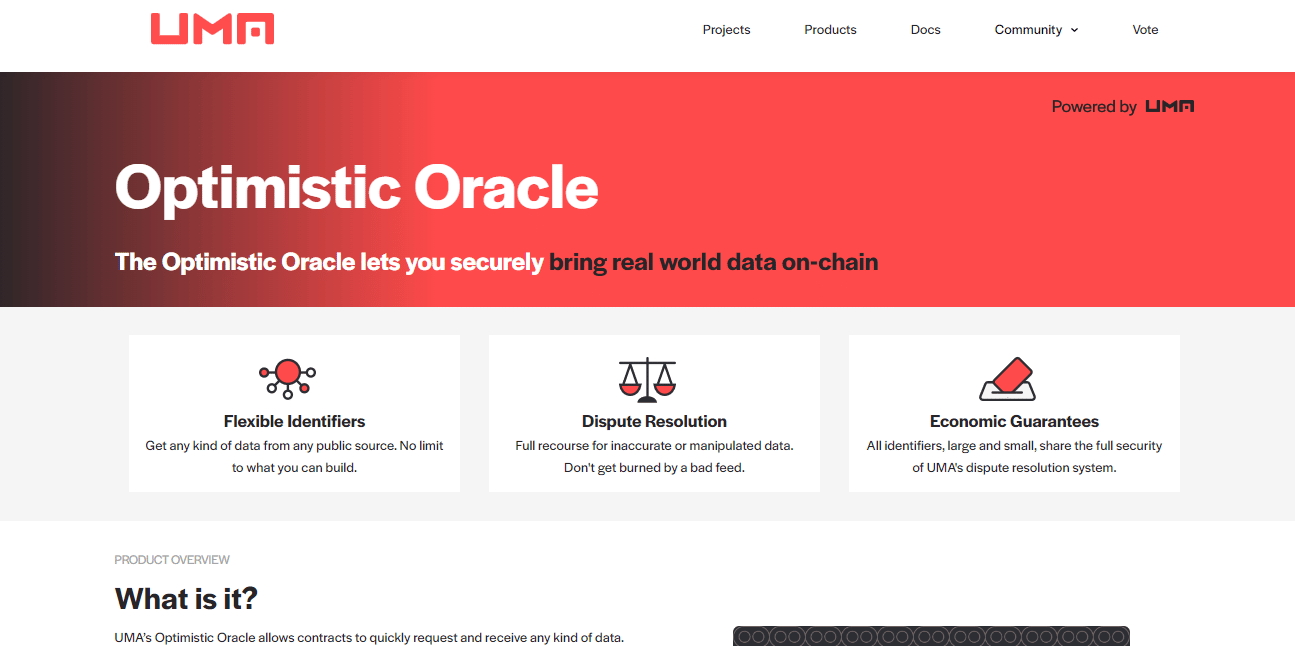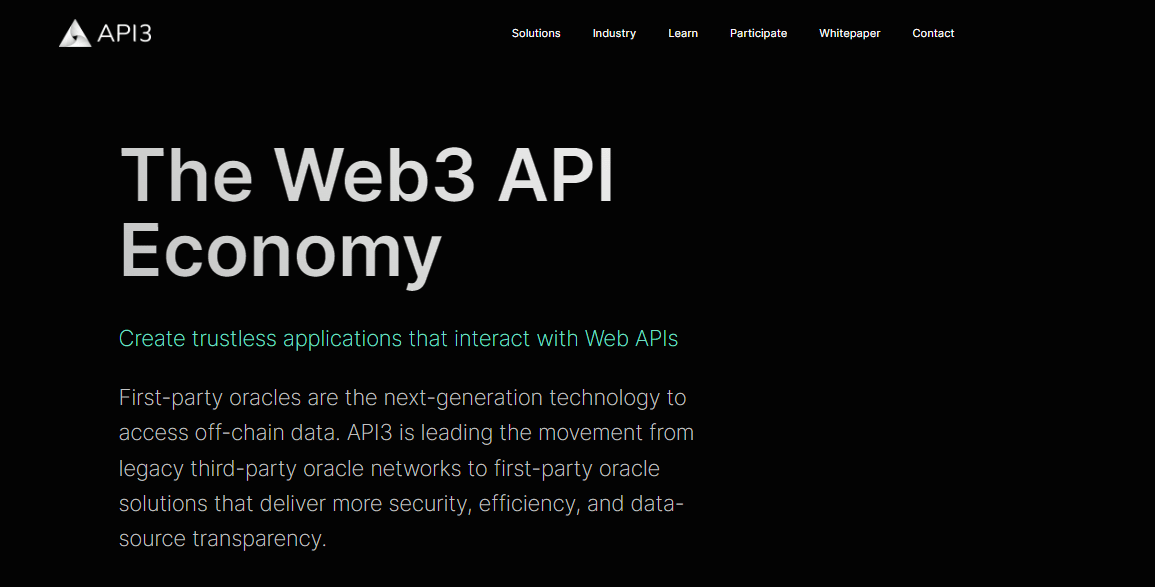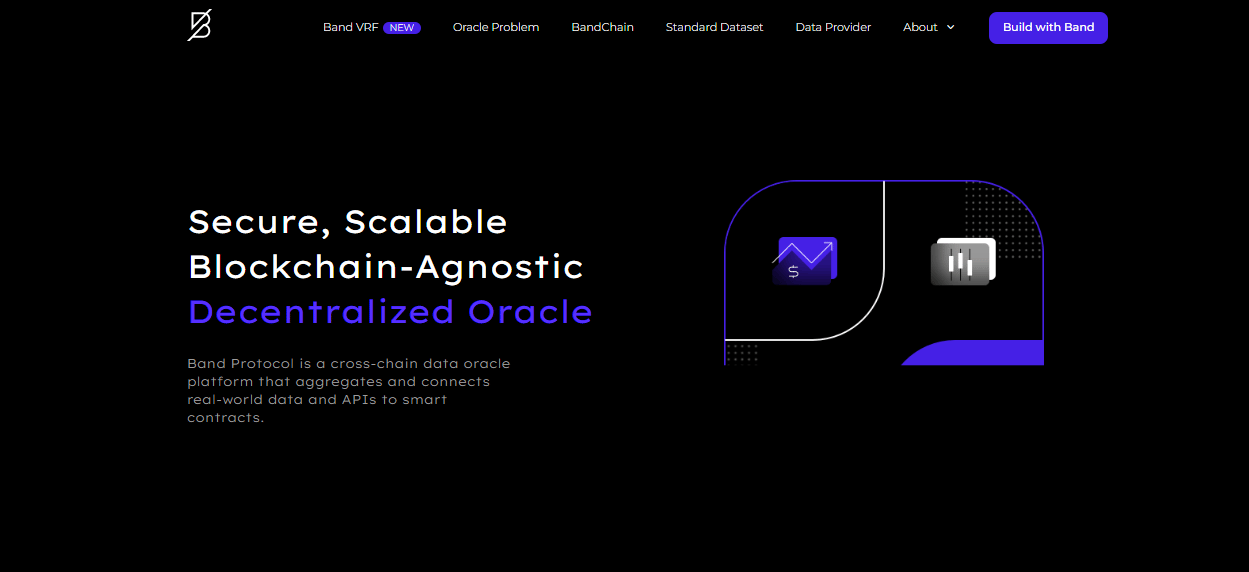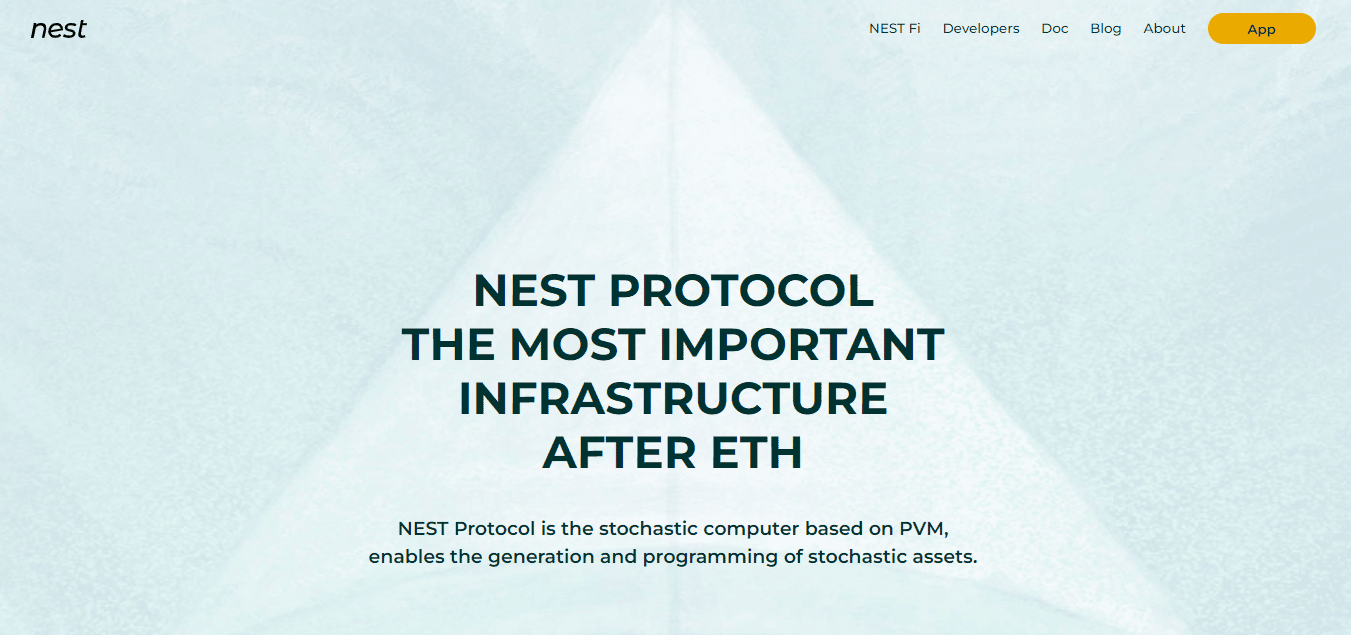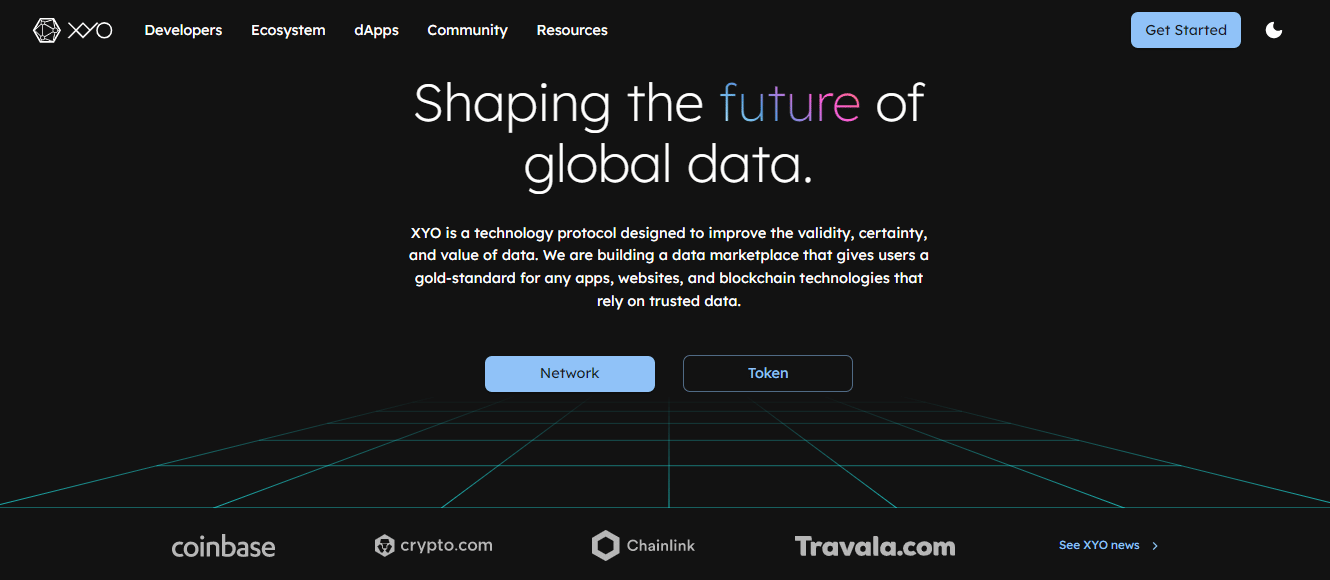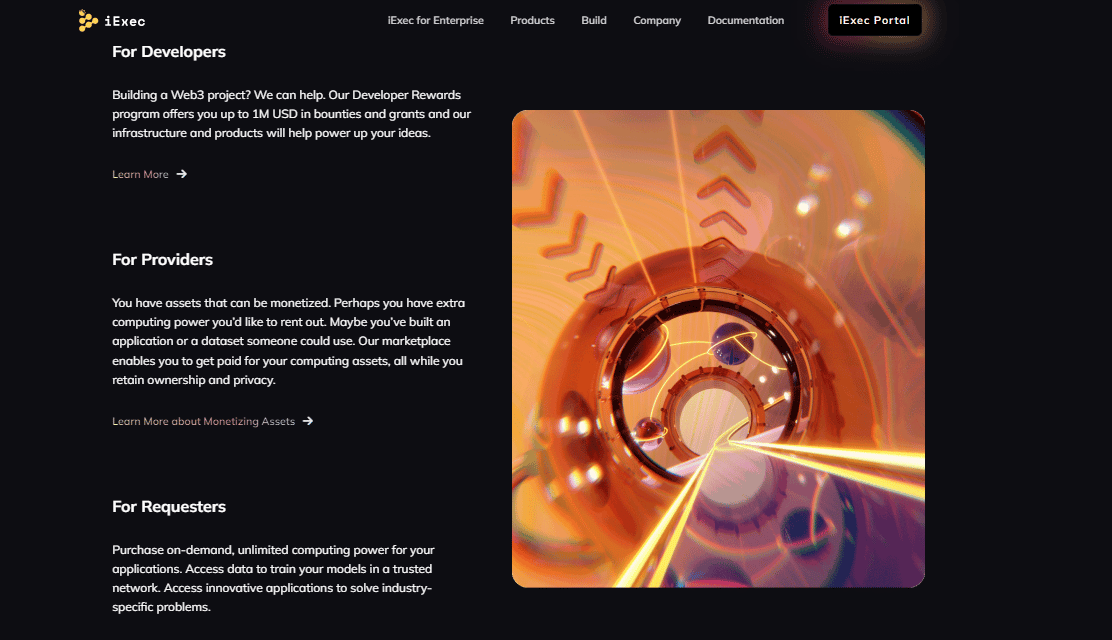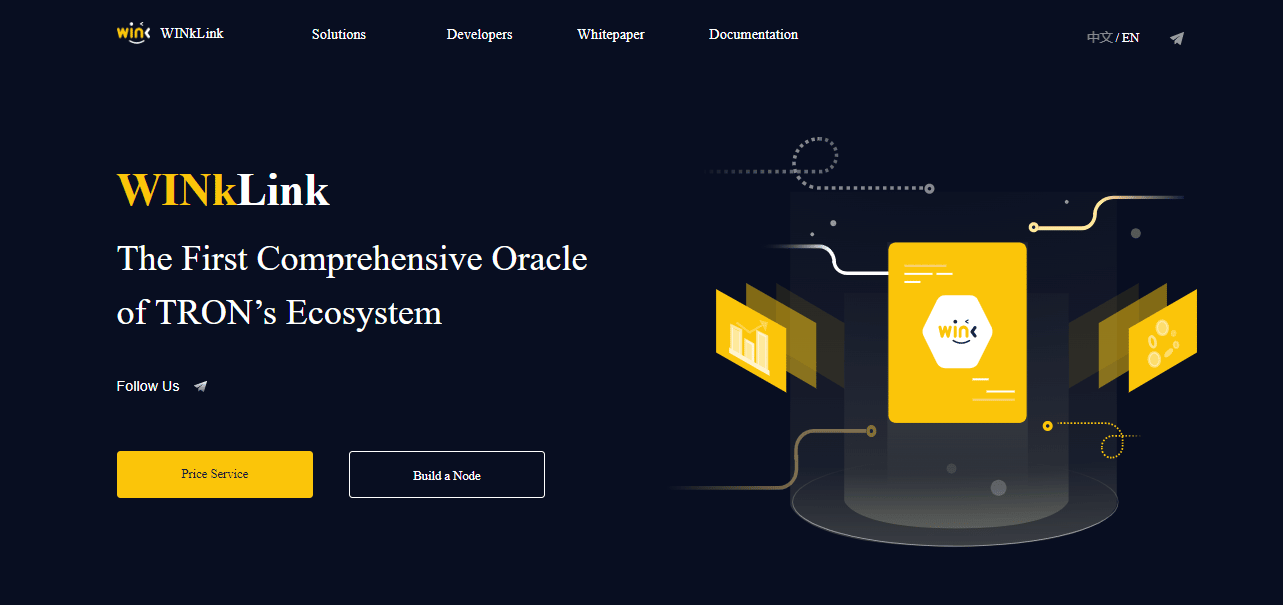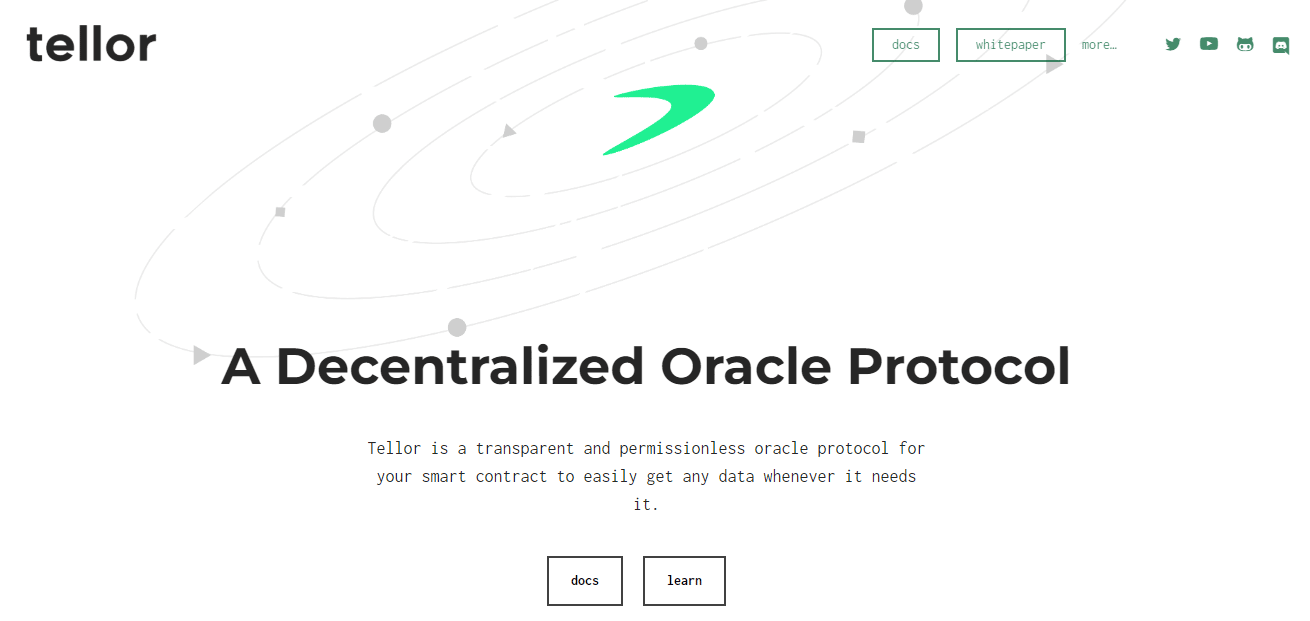A blockchain oracle is a third-party platform that bridges smart contracts with the outside world and vice versa. Most of these platforms use network oracles who search, query, verify and retrieve real-world data to smart contracts running decentralized applications (DApps); some other use APIs (Application Programming Interface).
Generally, oracles are incentivized using the platform’s native token, Chainlink’s $LINK, for example, for following the platform’s rules and retrieving reliable and useful data. The more adoption we see for blockchain oracles, the higher the usefulness of their respective native token, consequently increasing its value and rewards for oracles.
There are dozens of blockchain oracles competing to be the best solution for on-chain data reliability. With so many options, it might be overwhelming for developers and companies to choose a solid option. Worry not – this article compiles the top blockchain oracles dominating the industry in 2022.
1. Chainlink
Chainlink (LINK) is the largest blockchain oracle in the industry and the only one ever to reach a market capitalization sitting over the billion-dollar mark, according to data from CoinGecko.
Chainlink provides off-chain data to a wide range of blockchain-based ecosystems: layer-1s. Layer-2s, sidechains, and all kinds of DApps running on smart contracts. It was launched as an Ethereum-based oracle in 2019 by SmartContract, a San Francisco-based software company. In December 2021, Eric Schmidt, former CEO of Google, joined Chainlink as a strategic advisor for future projects.
Chainlink provides on-chain services to hundreds of blockchain platforms and software firms, including Avalanche, Aave, Ampleforth, Compound, Swisscom, T-Systems, and the Associated Press.
Overall, Chainlink is a highly secure multi-chain platform offering real-time on-chain services to hundreds of blockchain projects and software firms. Two of its most popular features are:
- Chainlink Verified Random Function (VRF): a protocol that generates a set of random values, and cryptographic proof of those values was determined. This function is mainly used by smart contracts running DApps that rely on unpredictable outcomes.
- Chainlink Automation: formerly Chainlink Keepers, it helps smart contracts with maintenance tasks, such as harvesting, liquidating, rebase, and setup costs and risks when accessing off-chain markets.
2. Universal Market Access – Best for Developers
Universal Market Access (UMA) is an Ethereum-based oracle that provides users with smart contract templates to create synthetic assets and financial contracts.
Synthetic financial contracts are tokenized versions of real-world products, such as derivatives, that replicate and track their performance and price using smart contracts, allowing average investors to gain exposure to a market with a high entry barrier.
With UMA’s user-friendly platform, users can digitize any existing real-world financial products: CFD (Contracts for Difference), commodities, and even cryptocurrencies. This way, DeFi markets can have broader exposure to the real world. When it comes to crypto, UMA allows users to own Bitcoin without actually holding the coin by creating a tokenized version of BTC or other cryptos.
UMA is open-source and decentralized —all smart contracts are run and governed by the UMA community, who use the UMA token to vote and submit proposals. Users can also earn rewards by the amount of activity they spend and the number of tokens staked in the protocol.
3. API3
API3 is a community-governed oracle that allows users and developers from blockchain apps or businesses to connect their Web3 apps to the platform to receive streams of off-chain data from multiple markets, including stocks, commodities, cryptocurrencies, and more.
API3 uses dAPIs, decentralized application programming interfaces, to feed data directly from first-party sources, unlike other oracles, which use oracle nodes as the intermediaries to search, query, and deliver data.
Another vital feature of API3 is Airnode, a Web3 middleware that connects web APIs directly to any blockchain app; this allows any API to be compatible with blockchain technology.
Some organizations working with API3 are Fantom, Polygon, Digital Currency Group, AllianceBlock, and more.
The API3 token powers the API3 platform, used by holders to stake and win voting rights in the API3 DAO (Decentralized Autonomous Organization). The pool of staked tokens allows API3 to offer “Service Coverage” to customers in case of malfunctioning dAPIs, which helps them to mitigate risk. Not all oracles provide this feature in case of malfunctioning or unreliable oracle nodes.
4. Band Protocol
Band Protocol is a cross-chain oracle built on Cosmos, an ecosystem of interoperable networks, that provides tamper-resistant data feeds into smart contracts using its public blockchain, BandChain.
BandChain’s validators request data from APIs or other web and relay that data to users and entities. The protocol can send data to multiple blockchains thanks to Cosmos’ IBC (Inter-Blockchain Communication) protocol. Users can also write their own oracle scripts to receive data streams from the real world, from multiple markets such as stocks, assets, commodities, and crypto, to real-life events such as weather, sports, and more.
Band Protocol uses a Delegated Proof-of-Stake (DpoS) consensus algorithm. When smart contracts request data, the protocol chooses a random validator with a high amount of staked $BAND to take on the job. Validators must stake $BAND, the protocol’s inflationary token, before retrieving data, and other validators vote on the authenticity of said data.
Some of Band Protocol’s notable backers and integrations are Binance, Fantom, Moonriver, and Iron Bank.
5. Nest Protocol
NEST Protocol is built on the Ethereum network and describes itself as the “truly decentralized oracle out there.”
The NEST network uses a reference system called “quotation mining” to obtain accurate off-chain information, which is a straightforward process and divides network participants into three:
- Price callers: users or entities who pay a fee to use the NEST protocol
- Miners: provide price quotations to smart contracts
- Verifiers: accept price quotation
Further, all developers on NEST use the NEST Probabilistic Virtual Machine (PVM), a type of virtual machine similar to EVM in the sense that it provides a library of basic functions for developers to assemble as many projects and stochastic assets, which are on-chain assets that can be issued or destroyed in response to random information flows.
The NEST token powers the NEST ecosystem and works as an economic incentive for network participants. Miners and verifiers must stake a certain amount of NEST tokens before providing and verifying data for smart contracts.
6. XYO Network
XYO Network is an Ethereum-based protocol that uses a network of anonymous and decentralized devices to provide accurate information on an object or person’s geospatial location. This allows apps to execute smart contract transactions based on location confirmation.
XYO Network uses proof-of-origin as its consensus algorithm, which allows the protocol to confirm the location of a specific person or object by collecting, verifying, and storing information based on “bound witness” interaction. These interactions occur among XYO’s four physical and decentralized components:
- Sentinels: devices that act as location witnesses, creating ledgers to temporarily solve heuristics —which are methods to solve problems and deliver reliable results.
- Bridges: devices that interpret geospatial data and transmit the information within the ledgers from the sentinels to archivists.
- Diviners: devices that analyze heuristics and are rewarded for providing an accurate analysis.
- Archivists: devices that store raw data from bridges and make it available to diviners and are compensated only when the data is retrieved.
XYO Network was created in 2018 alongside a partnership with Spaceflight, an in-space transportation services provider, which used XYO’s devices to communicate the position of satellites. Since its launch, oracle has formed partnerships with several technology and software firms, including Chainlink, Microsoft, and Deo Digital.
7. iExec RLC
iExec can be described as the Amazon Web Services (AWS) of the DeFi sector. This oracle offers a marketplace of cloud computing services that can connect Web2 businesses and apps with Web3.
iExec offers a user-friendly set of APIs that even developers with little to no blockchain knowledge can use to build their own oracles and power up their Web3 apps.
Users can also rent out their apps or datasets to other users and get rewarded for their computing services while maintaining ownership and privacy of these assets. These assets can solve specific problems within several industries, including supply chain, healthcare, B2B, and more.
8. WINkLink
WINkLink is a straightforward and simple-to-use blockchain oracle solution built on the TRON network. It allows users to create customized network oracles to search, query, and feed real-world data to smart contracts. This data can range from crypto, stocks, and NFTs to weather information, sports, real estate, and more.
9. Tellor
Tellor is a permissionless oracle that allows DApps to access off-chain from across multiple industries. It was built by Daxia, a derivatives platform built on Ethereum.
Tellor uses a reporting client —a system that relies on a network of reporters that search, query, verify and validate data. It has two types of data feeds; SpotPrice, which provides market data from existing APIs, and Custom Price, which modifies data according to clients’ needs.
10. DIA
DIA (short for Decentralized Information Assets) is a multi-chain community-governed oracle solution for Web3 apps. DIA is available across several blockchains, from layer-1s to layer-2s, including Solana, Ethereum, Avalanche, Fantom, Arbitrum, Aurora, and Polygon.
DIA provides enterprise-grade data feeds for entities looking to track traditional and digital financial applications, such as asset prices, lending rates, metaverse data, NFTs, cryptocurrencies, and more. These data feeds are fully customizable, allowing users to create specific feeds depending on their needs by configuring the sources and methodologies.
Final Thoughts: Why are Blockchain Oracles So Critical for Web3?
Oracles are vital for the Web3 ecosystem since they broaden the scope for the utility of blockchain-based applications. Without oracles, smart contracts would have limited capabilities outside of the blockchain world. One common misconception is that an oracle is a data source itself. This is incorrect since an oracle is a layer that sources and verifies external information.
The post Top 10 Blockchain Oracles in 2022: Which Oracles are Dominating the Market? appeared first on CoinCentral.


